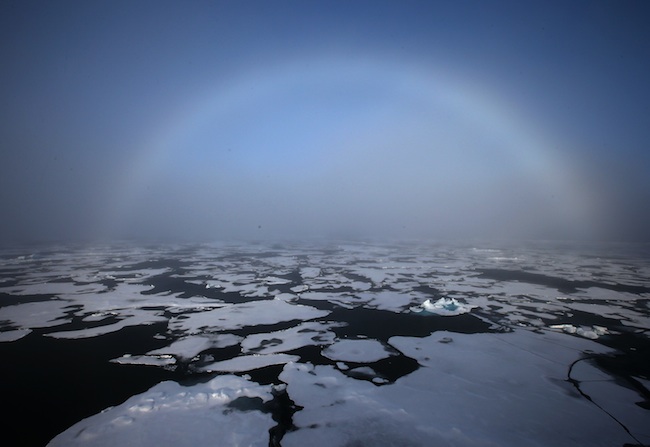SUMMARY
This is AI generated summarization, which may have errors. For context, always refer to the full article.

PARIS, France – Arctic sea ice, which has been declining in area by unprecedented amounts in summer, is also falling in volume, the European Space Agency (ESA) said on Wednesday, September 11.
In a press release showcasing findings from its science satellite CryoSat, ESA said that in April this year, the Arctic’s crust of ice was the thinnest observed in three years of operation.
“CryoSat continues to provide clear evidence of diminishing Arctic sea ice,” said Andrew Shepherd, a professor at the University of Leeds in northern England.
“From the satellite’s measurements we can see that some parts of the ice pack ice have thinned more rapidly than others, but there has been a decrease in the volume of winter and summer ice over the past three years,” ESA quoted Shepherd as saying at a symposium in Edinburgh, Scotland.
“The volume of the sea ice at the end of last winter was less than 15,000 cubic kilometres (3,600 cu. miles), which is lower than any other year going into summer, and indicates less winter growth than usual.”
Arctic sea ice — which floats on the ocean, unlike icesheets, which are on land — expands and contracts with the seasons.
In 2012, its extent at a key measuring point in the summer season was the lowest on record, a sign that many experts said gave further proof of man-made global warming.
Some ice experts say that the clue to summer ice lies in what happens during the winter. Thinner or less extensive ice in winter can lead to further losses in the following summer.
CryoSat — essentially CryoSat-2, replacing an original satellite that was lost at launch — was taken aloft in April 2010.
It has an all-weather microwave radar altimeter, capable of detecting changes in ice thickness to within one centimeter (0.4 of an inch).
The satellite had a designed operational life for three years but is in good health and should be able to continue until 2017, ESA added. – Rappler.com
Add a comment
How does this make you feel?
There are no comments yet. Add your comment to start the conversation.